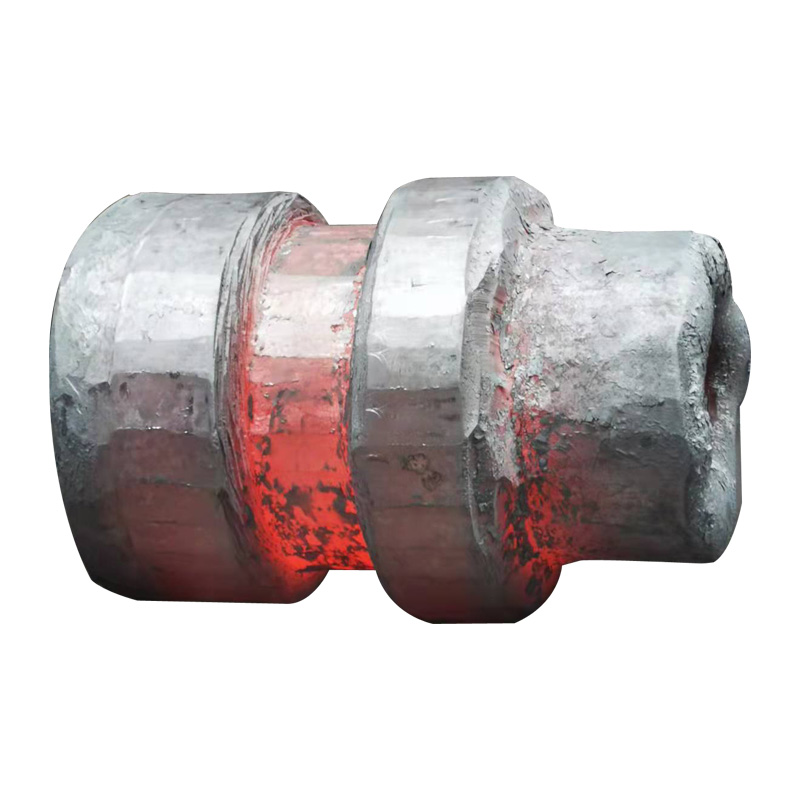What are the methods of heat treatment of forging parts in forging plant
What are the methods of heat treatment of forging parts in forging plant
According to different steel types and process requirements, the forging plant usually adopts the following heat treatment methods: annealing, normalizing, tempering, quenching and low temperature tempering, quenching and aging, etc. Let's take a look at each one separately:
1. Annealing:
The forging annealing process has various forms such as full annealing, spheroidization annealing, low temperature annealing and isothermal annealing, etc., which should be selected according to the material and deformation of the forging.
After annealing, the recrystallization refines the grain, eliminates or reduces the residual stress, thus reducing the hardness of the forging, improving its plasticity and toughness, and improving the cutting performance.
2. Normal fire:
Normalizing is generally to heat the forgings to 50-70℃ above the GSE line, and some high alloy steel forgings are heated to 100-150℃ above the GSE line, and then cooled in the air after proper insulation. If the hardness of the forging is higher after normalizing, in order to reduce the hardness of the forging, high temperature tempering should also be carried out, the general tempering temperature is 560-660℃.
3. Quenching and tempering:
Quenching is done to obtain an unbalanced tissue to improve strength and hardness. Heat steel forgings to 30-50℃ above Ac1 line. After heat preservation, rapid cooling.
Tempering is to eliminate quenching stress and obtain a more stable structure. The forging is heated to a certain temperature below the Ac1 line, held for a period of time, and then air cooling or fast cooling.
4. Quenching and aging:
Superalloys and alloys that can be strengthened by heat treatment are often treated by quenching aging after forging. Quenching is to heat the alloy to the appropriate temperature, after full heat preservation, so that some of the alloy tissue products dissolve into the matrix to form a uniform solid solution, and then rapidly cooling, become supersaturated solid solution, so it is also known as solution treatment. The aim is to improve the ductility and toughness of the alloy and prepare the microstructure for further aging treatment. Aging treatment is to place the susaturated solid solution or the alloy deformed by cold working at room temperature or heated to a certain temperature, and hold the alloy for a period of time, so that the previously dissolved substances in the matrix uniformly dispersed out. The purpose of aging treatment is to improve the strength and hardness of the alloy.
The heat treatment of forgings is carried out according to certain heat treatment specifications, according to the steel type, section size and technical requirements of forgings, and refer to the relevant manuals and materials. Its contents include: heating temperature, holding time and cooling method. Generally, temperature - time curve is used to represent.

According to different steel types and process requirements, the forging plant usually adopts the following heat treatment methods: annealing, normalizing, tempering, quenching and low temperature tempering, quenching and aging, etc. Let's take a look at each one separately:
1. Annealing:
The forging annealing process has various forms such as full annealing, spheroidization annealing, low temperature annealing and isothermal annealing, etc., which should be selected according to the material and deformation of the forging.
After annealing, the recrystallization refines the grain, eliminates or reduces the residual stress, thus reducing the hardness of the forging, improving its plasticity and toughness, and improving the cutting performance.
2. Normal fire:
Normalizing is generally to heat the forgings to 50-70℃ above the GSE line, and some high alloy steel forgings are heated to 100-150℃ above the GSE line, and then cooled in the air after proper insulation. If the hardness of the forging is higher after normalizing, in order to reduce the hardness of the forging, high temperature tempering should also be carried out, the general tempering temperature is 560-660℃.
3. Quenching and tempering:
Quenching is done to obtain an unbalanced tissue to improve strength and hardness. Heat steel forgings to 30-50℃ above Ac1 line. After heat preservation, rapid cooling.
Tempering is to eliminate quenching stress and obtain a more stable structure. The forging is heated to a certain temperature below the Ac1 line, held for a period of time, and then air cooling or fast cooling.
4. Quenching and aging:
Superalloys and alloys that can be strengthened by heat treatment are often treated by quenching aging after forging. Quenching is to heat the alloy to the appropriate temperature, after full heat preservation, so that some of the alloy tissue products dissolve into the matrix to form a uniform solid solution, and then rapidly cooling, become supersaturated solid solution, so it is also known as solution treatment. The aim is to improve the ductility and toughness of the alloy and prepare the microstructure for further aging treatment. Aging treatment is to place the susaturated solid solution or the alloy deformed by cold working at room temperature or heated to a certain temperature, and hold the alloy for a period of time, so that the previously dissolved substances in the matrix uniformly dispersed out. The purpose of aging treatment is to improve the strength and hardness of the alloy.
The heat treatment of forgings is carried out according to certain heat treatment specifications, according to the steel type, section size and technical requirements of forgings, and refer to the relevant manuals and materials. Its contents include: heating temperature, holding time and cooling method. Generally, temperature - time curve is used to represent.

Send Inquiry
X
We use cookies to offer you a better browsing experience, analyze site traffic and personalize content. By using this site, you agree to our use of cookies.
Privacy Policy



